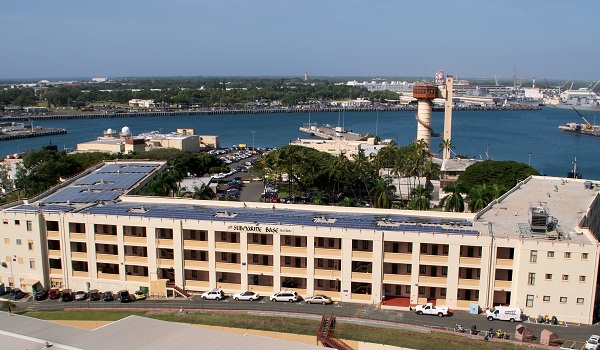A new $30 million initiative could transform the way U.S. military bases deal with power failures. Termed SPIDERS—mercifully short for Smart Power Infrastructure Demonstration for Energy Reliability and Security—the three-phase project will focus on building smarter, more secure microgrids that make use of renewable energy sources. Sandia Labs has been chosen as the lead designer for the SPIDERS project.
Right now, if the power goes out at a military base, each building within the base will switch to a backup energy source, often provided by a diesel generator. But the military isn’t crazy about this setup, in part because generators can fail to start—especially bad news for base hospitals and other critical operations—and if a building’s backup power system doesn’t start, there is no way to use power from another building’s generator. In addition, most generators are oversized and use a lot of dirty and increasingly expensive fuel. SPIDERS is working to change that by connecting clean energy sources like solar and wind in microgrids that can function when commercial power service is interrupted.

“People run single diesel generators all the time to support buildings, but they don’t run interconnected diesels with solar, hydrogen fuel cells and so on, as a significant energy source. It’s not completely unheard of, but it’s a real integration challenge,” Jason Stamp, Sandia’s lead project engineer for SPIDERS, said in a statement.
Sandia will work to set up a smart, cybersecure microgrid that will allow renewable energy sources to stay connected and run in coordination with diesel generators, which can all be brought online as needed. The new system is expected to not only make the military’s power more reliable, it will also lessen the need for diesel fuel and reduce its carbon footprint.
The project is being funded and managed through the Defense Department’s Joint Capability Technology Demonstration (JCTD) with the support of the U.S. Department of Energy. Soon, the departments hope to use the SPIDERS plan for civilian facilities like hospitals.
“The SPIDERS approach has many applications beyond military uses. Our interest in SPIDERS extends to organizations, like hospitals, that are critical to our nation’s functionality, especially in times of emergency,” Merrill Smith, DOE program manager said in a statement.
Sandia will install the first SPIDERS microgrid at Joint Base Pearl Harbor Hickam in Honolulu, and will take advantage of several renewable power options already in place, including a 146-kilowatt (kW) photovoltaic solar power system, and up to 50 kW of wind power.

The second installation will take place at Fort Carson and will integrate existing solar power systems, several large diesel generators and electric vehicles. Large-scale electrical energy storage will also be used to ensure microgrid stability and to reduce the effects of PV variability on the system. Camp H.M. Smith will be the largest microgrid project and will use solar and diesel generators to power the entire base, which will be its own self-sufficient 5 megawatt microgrid when the national grid is unavailable.
Integration and implementation are scheduled through 2014. The goal is to install the circuit level demonstration at Pearl Hickam and Fort Carson next year, with Camp Smith installed in 2013.